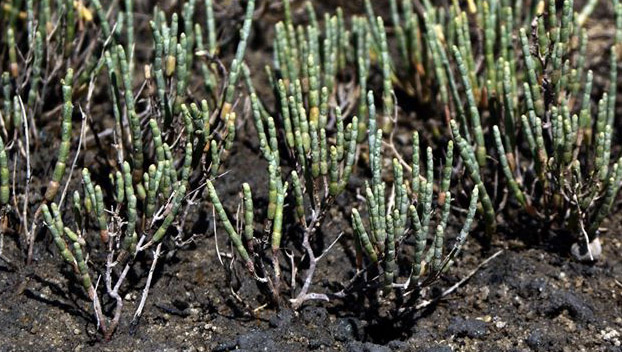Pickleweed: A great natural condiment
Published 10:00 am Saturday, September 10, 2022

- It’s a halophyte, a salt tolerant plant with a big flavor.
|
Getting your Trinity Audio player ready...
|
Way back pre-pandemic, when travel was easy, I spent some time in Cornwall with friends. It was a great opportunity to explore local gardens and eat amazing food. The Lost Gardens of Heligan offer 200 acres of plantings that can easily transport a visitor to another world. The jungle has huge ferns and looks prehistoric. The woodlands have entirely different vistas and plants. Altogether, Heligan is Europe’s largest garden restoration project. The Eden Project, also in Cornwall, is an entirely different learning experience.
Sometimes, however, it’s the simple things that make the biggest impression. On this trip that simple thing was Salicornia, otherwise known as samphire, sea beans, sea asparagus, pickleweed, and probably half a dozen other names too. I saw some odd-looking, bright green succulents with finger-like leaves growing near the water, but didn’t know what they were. A stranger explained identified the plant and offered a taste. Yes, Salicornia is edible when raw or cooked and quite tasty. When raw, it’s salty, crunchy, and tangy, somewhat like a pickle. It’s not unusual for it to be added to salads in Cornwall.
I forgot about Salicornia until I went to Daufuskie Island, and someone there offered me a bite of a succulent growing in a wet area. Since then, I’ve searched for Salicornia in the Virginia Beach area, but haven’t found it yet. There’s supposed to be some at the Pleasure House Point Natural Area and there’s probably plenty in other places as well, so the quest will continue on my next trip.
Trending
There are three species of Salicornia found in Virginia: jointed glasswort (S virginica), woody glasswort (S ambigua), and dwarf glasswort (S bigelovii Torrey), all found in salt pannes (depressions that hold water) and overwash flats in the Coastal Plain. S virginica is also found at Saltville in Smyth County where it is rare. It is an annual while the other two species are perennials.
No matter what common name you use for this plant, it’s an interesting terrestrial plant capable of living in extremely salty environments. If you happen to find some for sale in the produce department of a specialty shop or a seafood store, be sure to try it. It would be excellent with fish, lamb, or a citrus salad. I would love to add it to linguine with a lemony butter sauce and chunks of salmon. I think it might even make an intriguing garnish for a gin and tonic. However you decide to prepare it, just don’t add salt. Enjoy its natural brininess.
DR. CYNTHIA WOOD is a master gardener who writes two columns for The Herald. Her email address is cynthia.crewe23930@gmail.com.






